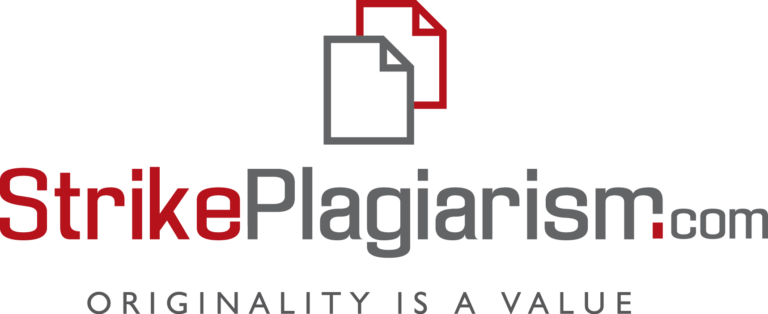МОРСЬКИЙ ТОРГОВЕЛЬНИЙ ПОРТ: СТРУКТУРА БІЗНЕС-МОДЕЛІ ТА ДЖЕРЕЛО ЇЇ ІННОВАЦІЙ
DOI:
https://doi.org/10.18524/2413-9998.2018.2(39).144904Ключові слова:
бізнес-модель, комплементарні активи, морський торговельний порт, генерація інноваційАнотація
У статті розглянута структура бізнес-моделі, описуються додаткові активи на випадок морського торговельного порту як основи створення бізнес-моделі. Використання додаткових активів вивчається в контексті операційних стратегій для отримання економічної ренти у випадку продажу; формування спільного підприємства, державно-приватного партнерства; підписання концесійного лізингу або ліцензування прав доступу до додаткових активів. Визначено властивості комплементарних активів, зокрема: синергетичний ефект можна забезпечити у випадку одночасного розвитку додаткових активів; унікальність додаткових активів призводить до монополії власника; право власності на додаткові активи має вирішальне значення для визначення одержувача доходу.
Спеціалізованими комплементарними активами морського порту визначено: репутацію; бренд; сформовані кластери; мережи дистрібуції; досвід та кваліфікація спеціалістів; експертиза; громада морського порту; інформаційні бази даних. Загальними додатковими активами пропонується розглядати: інфраструктуру; обладнання; контрольні та контрольно-пропускні потужності (митний контроль); комп'ютери та системи автоматизації; соціальні мережі, ERP-мережі; угоди з державою та муніципалітетом.
Отримання права доступу на додаткові активи відбувається залежно від їхнього роду і можливо завдяки формуванню спільного підприємства, державно-приватного партнерства, стратегічного альянсу та ліцензування, угод про надання пільгових або аутсорсингових послуг для використання додаткових активів. Відповідно до визначення бізнес-моделі, доцільність залучення додаткових активів як основи формування бізнес-моделі є обґрунтованою через їх здатність надавати монопольне становище власника додаткових активів. Додаткова вартість, яку вимагає замовник, створюється внаслідок синергетичної взаємодії додаткових активів. Таким чином, застосування ресурсу відбувається в умовах збільшення доданої вартості, яка створюється підприємством.
Посилання
Menger, К. (1992). The Foundation of political economy. The Austrian school in political economy. Мoscow : Economy.
Viser, F. (1992). Theory of public economy. The Austrian school in political economy. Мoscow : Economy.
Abuzyarova, M. I. (2015). The complementarily of companies’ assets as an effective tool for managing innovation projects. London Journals in Economics, Marketing, Finance, Business and Innovation, Vol. 2. pp. 7-17.
Milgrom, P. &, Roberts, J. (1990). The Economics of Modern Manufacturing: Technology, Strategy, and Organization. The American Economic Review, № 80 (3), pp. 511-528.
Teece, Dj. (1986). Profiting from technological innovation: implications for integration, collaboration, licensing and public policy. Research Policy, № 15, pp. 285-305.
Teece, Dj. (1986). Profiting from technological innovation: implications for integration, collaboration, licensing and public policy. Research Policy, № 15, pp. 285-305.
Hamel, G. (1991). Learning in international alliances. Strategic Management Journal, Vol. 12, pp. 83-103.
Pastor-Agustín, G., Marisa Ramírez-Alesón, M. & Espitia-Escuer, M. (2011). Complementary Assets and Investment Decisions. Emerging Markets Finance & Trade, November–December, Vol. 47, Supplement 5, pp. 25-39.
Pastor-Agustín, G., Marisa Ramírez-Alesón, M. & Espitia-Escuer, M. (2011). Complementary Assets and Investment Decisions. Emerging Markets Finance & Trade, November–December, Vol. 47, Supplement 5, pp. 25-39.
Pek-Hooi, S. & Jiang, Y. (2010). Institutional environment and complementary assets: Business strategy in China’s 3G development. Asia Pacific Journal of Management, December, pp. 646-675.
Rothaermel, F. T. & Hill Charles, W. L. (2005). Technological discontinuities and complementary assets: a longitudinal study of industry and firm performance. Organization Science, Vol. 16, № 1, January–February, pp. 52-70.
Teece, Dj. (1986). Profiting from technological innovation implications for integration, collaboration, licensing and public policy. Research Policy, № 15, pp. 285-305.
Tripsas, M. (1997). Unraveling the process of creative destruction: Complementary assets and incumbent survival in the typesetter industry. Strategic Management Journal, № 18, pp. 119-142.
Rothaermel, F. T. & Hill Charles, W. L. (2005). Technological discontinuities and complementary assets: a longitudinal study of industry and firm performance. Organization Science, Vol. 16, № 1, January–February, pp. 52-70.
Tripsas, M. (1997). Unraveling the process of creative destruction: Complementary assets and incumbent survival in the typesetter industry. Strategic Management Journal,. № 18, pp. 119-142.
Teece, Dj. (1986). Profiting from technological innovation implications for integration, collaboration, licensing and public policy. Research Policy, № 15, pp. 285-305.
Lerner, J. & Merges, R. (1998). The control of technology alliances: An empirical analysis of the biotechnology industry. Journal of Industrial Economics, № 46, pp. 125-156.
Teece, Dj. (1992). Competition, cooperation, and innovation. Organizational arrangements for regimes of rapid technological progress. Journal of Economic Behavior Organisations, № 18, pp. 1-25.
Rothaermel, F. T. (2001). Complementary assets, strategic alliances, and the incumbent’s advantage: An empirical study of industry and firm effects in the biopharmaceutical industry. Research Policy, № 30, pp. 1235-1251.
##submission.downloads##
Опубліковано
Як цитувати
Номер
Розділ
Ліцензія
Авторське право (c) 2018 Ринкова економіка: сучасна теорія і практика управління

Ця робота ліцензується відповідно до Creative Commons Attribution-NonCommercial 4.0 International License.
Автори залишають за собою право на авторство своєї роботи та передають журналу право першої публікації цієї роботи на умовах ліцензії Attribution-NonCommercial 4.0 International (CC BY-NC 4.0).
Автори мають право укладати самостійні додаткові угоди щодо неексклюзивного розповсюдження роботи у тому вигляді, в якому вона була опублікована цим журналом (наприклад, розміщувати роботу в електронному сховищі установи або публікувати у складі монографії), за умови збереження посилання на першу публікацію роботи у цьому журналі.
Політика журналу дозволяє і заохочує розміщення авторами в мережі Інтернет (наприклад, у сховищах установ або на особистих веб-сайтах) роботи, оскільки це сприяє виникненню продуктивної наукової дискусії та позитивно позначається на оперативності та динаміці цитування опублікованої роботи (див. The Effect of Open Access).


